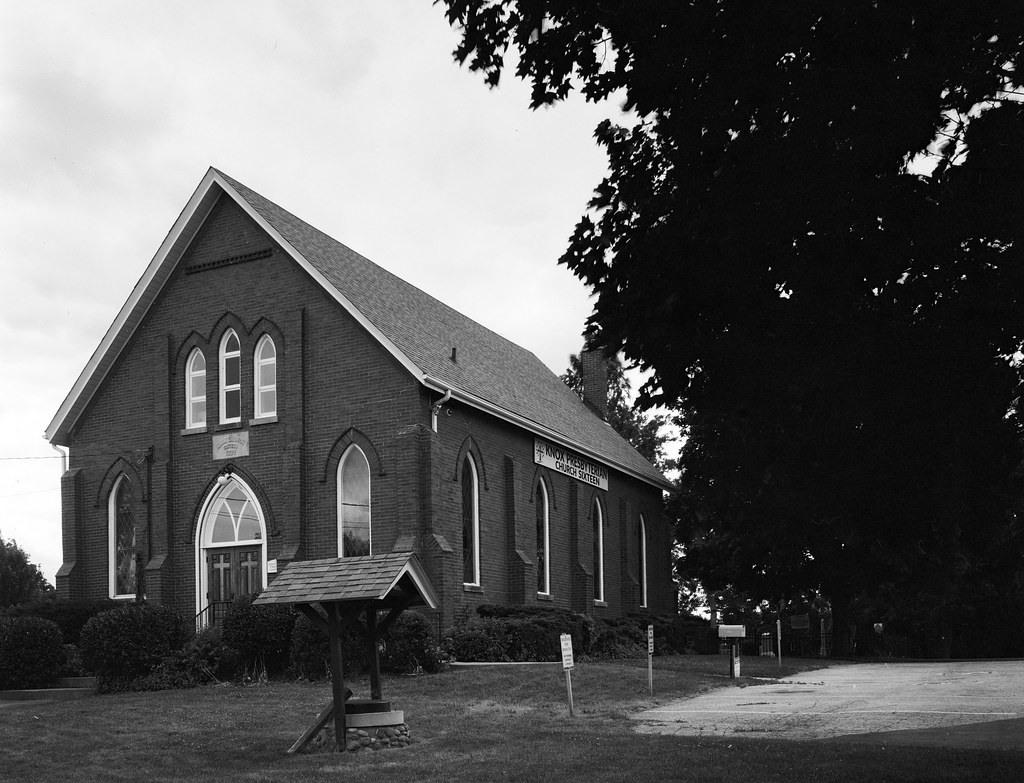Some still exist when it comes to the former villages that occupied the stretch of Dundas on the former northern edge of Oakville. The village of Sixteen Hollow (alternatively Proudfoot Hollow) has vanished save for an oddly named Presbyterian Church, Knox Sixteen.

George Chalmer’s established the small community in the late 1820s, a mill and tavern forming the community’s core. Being made up mainly of those who traced their heritage to Scotland, they brought with them the Presbyterian Church. These early settlers would worship at home with a saddlebag preacher, or when the Presbyterians established a congregation in Oakville would travel south when they were able or engage the minister of the Oakville congregation to hold a Sabbath Service in Sixteen Hollow. It was in 1844 that the Free Church agreed to establish a congregation in the village in connection with the Oakville congregation. A local farmer donated a quarter acre of his land to establish a Church and cemetery. A simple wooden frame structure was completed here, and the first service was attended in 1845. And while the village’s fortunes began to fade through the later decades of the century, the church remained, taking the name Knox Sixteen. In 1883, the association with the Oakville Church ended, and it became a two-point charge with St. Paul’s Presbyterian Church in Nelson. And while the village had vanished by 1890, the congregation remained strong and the church a focal point for local farmers and Presbyterians across the hamlets of Trafalgar Township. The frame building was covered in brick in 1899, forming the church as it is seen today, and the sanctuary received a complete renovation and electric lights in 1924. The congregation was among those to create the Continuing Presbyterian Church in 1925, voting against Church Union. When the Synod and the Presbytery maps were redrawn, Knox Sixteen became a two-point charge with St. Andrew’s in Streetsville. Only during the creation of the Presbytery of Brampton in 1968 did the congregation become a single-point charge. An anniversary project in 1994 saw a proper basement dug under the church, and a kitchen, hall, and classrooms were constructed. Today, despite its rural location, the rapid growth of Oakville sees the congregation continues to serve a new group of citizens.
The location and position of Knox Sixteen proved a little tricky; the small property, a written iron fence and road work made it difficult to set up a good line of sight. The ideal spot was on a steep hill, right where the fence was. It took a bit to get the tripod level on the hill. Then with the 125mm lens, I raised the front standard. Thankfully even with the foliage, I could still capture the entire building.
If you wish to worship with this congregation, they will be happy to welcome you! Please check out the congregational website for details on attending services worship either in-person on online streaming!
Web: knox16presbyterian.ca
Facebook: facebook.com/Knox-Presbyterian-Church-Sixteen-374456506410980
Instagram:
YouTube: youtube.com/channel/UCD9vXr88QYvSE5woeTNkS_A